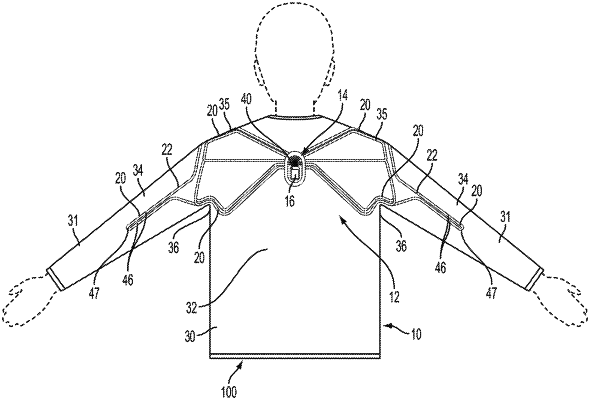| CPC G01L 1/205 (2013.01) [A61B 5/1126 (2013.01); A61B 5/6802 (2013.01); A61B 5/6804 (2013.01); A61B 5/6805 (2013.01); A63B 24/00 (2013.01); A41D 1/002 (2013.01); A61B 5/002 (2013.01); A61B 5/1114 (2013.01); A61B 2503/10 (2013.01); A61B 2562/0261 (2013.01); A61B 2562/04 (2013.01)] | 22 Claims |

|
1. A method comprising:
providing an article of apparel configured to be worn by a user;
connecting a port to the article of apparel, the port having an interface configured for communication with an electronic device; and
extruding a polymeric material onto the article of apparel to form a plurality of sensors configured to detect movement of the user wearing the article of apparel and a plurality of conductive leads electronically connecting the sensors to the port, comprising:
extruding the polymeric material having a conductive particulate material dispersed therein at a first dispersion density to form the plurality of sensors, such that the sensors are configured to increase in resistance when deformed under pressure to detect movement of the user wearing the article of apparel; and
extruding the polymeric material having the conductive particulate material dispersed therein at a second dispersion density that is higher than the first dispersion density to form the plurality of conductive leads, such that the conductive leads are configured to conduct an electronic signal between the sensors and the port in any state of deformation.
|